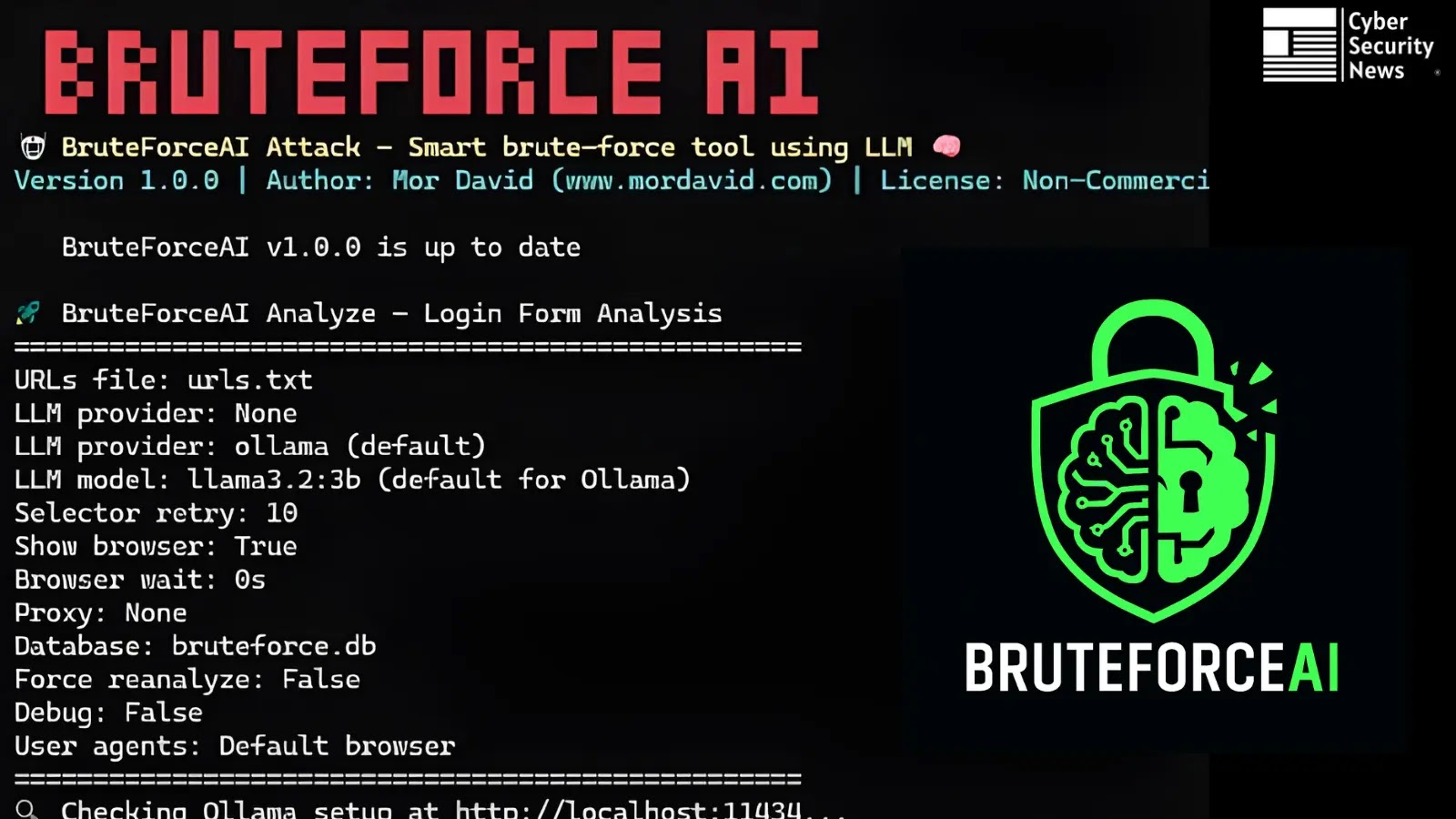
New BruteForceAI Tool Automatically Detects Login Pages and Executes Smart Brute-Force Attacks
The landscape of cyber threats is constantly evolving, with attackers leveraging increasingly sophisticated tools and techniques. For organizations, the critical task of identifying and remediating weak authentication mechanisms has always been a race against time and ingenuity. Now, an innovative penetration testing framework has emerged that dramatically shifts the efficiency of this process: BruteForceAI.
Developed by Mor David, BruteForceAI integrates the power of large language models (LLMs) with advanced browser automation. This potent combination enables the tool to autonomously detect login forms and execute highly sophisticated brute-force attacks, streamlining what was once a labor-intensive and often manual credential-testing workflow. This capability is not merely an incremental improvement; it represents a significant leap in how security teams can identify and address authentication vulnerabilities rapidly and efficiently.
Understanding BruteForceAI: LLMs Meet Browser Automation
At its core, BruteForceAI represents a paradigm shift in automated penetration testing. Traditional brute-forcing tools require manual identification of login fields, parameter customization, and often struggle with dynamic web pages or sophisticated anti-bot measures. BruteForceAI, however, leverages the analytical power of LLMs to overcome these challenges.
- Autonomous Login Page Detection: Unlike conventional tools, BruteForceAI utilizes LLMs to intelligently analyze web page content, identifying login forms and authentication fields without explicit user input. This AI-driven form analysis allows the tool to adapt to diverse web architectures and dynamic content.
- Smart Brute-Force Execution: Once a login form is detected, the framework orchestrates sophisticated brute-force attacks. This isn’t just a simple dictionary attack; the LLMs can potentially guide the attack based on inferred login mechanisms, error messages, and even contextual clues from the page.
- Evasion Techniques: To maximize effectiveness against real-world targets, BruteForceAI incorporates evasion techniques. These mechanisms help the tool bypass common security measures such as rate limiting, captchas, and IP blacklisting, ensuring a higher success rate in credential testing.
- Comprehensive Logging: For security teams, detailed logging is paramount. BruteForceAI provides comprehensive logging capabilities, allowing analysts to meticulously review attack attempts, successful compromises, and the pathways taken to achieve them. This data is crucial for reporting, remediation, and understanding the efficacy of the test.
How BruteForceAI Enhances Penetration Testing Workflows
The integration of AI into credential testing offers several compelling advantages for security professionals:
- Increased Efficiency: The autonomous nature of BruteForceAI drastically reduces the manual effort involved in identifying and testing login pages. This frees up security analysts to focus on more complex vulnerabilities and strategic security initiatives.
- Broader Coverage: By intelligently navigating and analyzing web applications, BruteForceAI can uncover authentication weaknesses that might be missed by manual or less sophisticated automated approaches, especially in large and complex web environments.
- Realistic Attack Simulation: The tool’s ability to incorporate evasion techniques and adapt to dynamic web content allows for more realistic attack simulations, providing a truer picture of an organization’s susceptibility to credential-based attacks.
- Rapid Vulnerability Identification: Expedited testing cycles mean that weak authentication mechanisms can be identified and remediated much faster, reducing the window of opportunity for malicious actors.
Implications for Organizations and Defenders
While BruteForceAI is a tool for legitimate penetration testing, its capabilities underscore a critical message for all organizations: robust authentication is non-negotiable. The existence of such a sophisticated tool, even in ethical hands, highlights the ease with which weak credentials or poorly configured login mechanisms can be exploited.
Remediation Actions for Stronger Authentication
To defend against advanced brute-force attacks and credential stuffing, organizations must adopt a multi-layered approach to authentication security. The following actions are critical:
- Implement Multi-Factor Authentication (MFA): This is the single most effective deterrent against credential-based attacks. MFA adds an additional layer of security beyond just a password, significantly increasing the difficulty for attackers.
- Enforce Strong Password Policies: Mandate complex passwords with a mix of uppercase, lowercase, numbers, and symbols. Regularly review and update these policies.
- Implement Rate Limiting: Configure web application firewalls (WAFs) or application-level controls to restrict the number of failed login attempts from a single IP address or user within a specific timeframe.
- Employ Account Lockout Policies: Temporarily lock user accounts after a certain number of failed login attempts to prevent systematic brute-forcing. Balance security with usability to avoid denial-of-service for legitimate users.
- Utilize CAPTCHAs and reCAPTCHAs: Implement mechanisms to differentiate between human and automated interactions, especially on login pages.
- Monitor for Credential Stuffing Attacks: Implement security information and event management (SIEM) systems to continuously monitor login attempts for anomalous patterns, such as multiple failed logins from various, previously unseen, IP addresses.
- Regularly Audit Authentication Mechanisms: Conduct frequent penetration tests, utilizing tools like BruteForceAI, to proactively identify and remediate vulnerabilities in login forms and authentication flows.
- Educate Users: Train employees on the importance of strong, unique passwords and the dangers of phishing attempts that aim to steal credentials.
Conclusion
BruteForceAI exemplifies the growing trend of AI integration in cybersecurity tools, offering unprecedented efficiency in identifying authentication weaknesses. For penetration testers, it’s a powerful asset that streamlines workflows and enhances the scope of credential testing. For organizations, it serves as a stark reminder of the sophisticated tools available to both ethical hackers and malicious actors. The proactive adoption of robust authentication practices and continuous security assessments are no longer optional; they are fundamental requirements for maintaining a resilient cybersecurity posture in an increasingly automated threat landscape.





